If you're looking for a traditional Flieger watch, there are two brands that won't stop coming up. Laco and Stowa are two German watchmakers with a deep history that make high-quality pilot watches.
However, Stowa timepieces always seem to come out on top when the two brands are put head-to-head. Is there a reason for this unbalanced preference for Stowa over Laco, or is it simply a question of better marketing?
Let's find out!
A bit of history
Laco and Stowa are two German companies that originate from the early 20th century (1925 and 1927, respectively).
While both businesses were pretty successful before WW II, the war really took their production numbers up to the next level. Indeed, Laco and Stowa were part of the 5 companies appointed by the Luftwaffe to make watches for the army.

However, the war also marked a tedious period in their history since the main factory of the two watchmakers got destroyed during the bombardment on Pforzheim.
Although this tragedy hit hard, both companies quickly recovered from this disaster and went on to be important parts of German watchmaking history.
The two watchmakers had a pretty good run up until 2009, where Laco had to go into insolvency after being unable to make a steady profit. In 2010, new owners bought the company and started new operations with 8 employees.
For this reason, some watch enthusiasts have more respect for Stowa, which has an uninterrupted run of production since 1927. Conversely, there's a "gap" in Laco's history, which tarnished the brand's reputation.
What is different between Laco and Stowa?
1. Faithfulness to the original model
The main difference between Laco and Stowa is that Laco produces watches that are much more representative of the original B-Uhr watch, whereas Stowa creates a modern interpretation of the original watch.
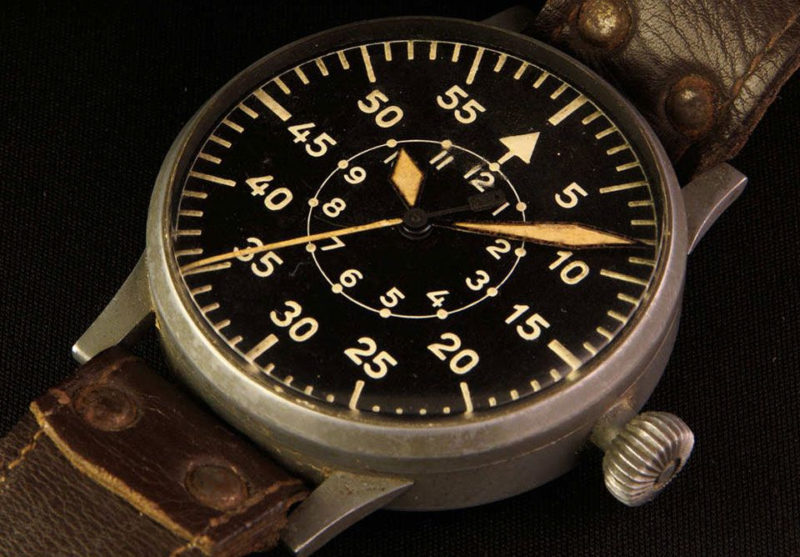
This means that Stowa watches are smaller, have a smoother finish, and are usually a bit more comfortable (curved lugs, softer edges, etc.). Although this makes Stowa the prefered brand, this is not historically accurate at all.
On the other hand, Laco watches are more rugged, square, sharp, and a bit less comfortable than Stowa. However, they truly give the experience of what wearing the original B-Uhr was like (huge case, sharper ends, straight lugs, etc.).
2. Origins of the movement
In the European watch industry, it's a big no-no to source your movement from somewhere outside Europe. For this reason, German watchmakers that can't afford to produce in-house calibers usually source their movements from Switzerland.
Laco's new ownership and management thought it would be a good idea to introduce Miyota movements as a cost-effective alternative to the usual ETA movement. This turned a lot of people away from the Laco brand since using a Japanese movement in a European watch is blasphemous to them.
Conversely, Stowa followed the European watchmaking etiquette to the letter and stuck with ETA (Swiss) for its timepieces. This is yet another reason why Stowa is preferred to Laco by a lot of collectors.
3. Variety
The two watchmakers have quite a big offering filled with lots of different watches, but they each focus on different markets. For example, Laco's centerpiece is certainly the Pilot Watch category, and the great majority of their watches are Fliegers.
On the other hand, Stowa has now expanded its horizons and sells lots of watch categories including Flieger, but also dress, sports, dive, and chronograph watches. Over time, this might dilute Stowa's brand, but they still seem to be the preferred Flieger watch provider for now.
4. Pricing
After their 2010 rebranding, Laco introduced a 3-tier pricing strategy for their offering. For instance, you can get their cheaper Miyota 8215-equipped watches for $4-500, their mid-range Miyota 9015-equipped watches for around $7-800, and finally, their high-end Elaborated ETA-equipped pieces for $1000-1500+.
On the other hand, Stowa uses ETA movements for all its collection, so the great majority of Stowa timepieces will be sold for €800-€1200.
Once again, the 3-tier pricing strategy of Laco dilutes the brand's name, whereas Stowa's consistency gives them a better reputation.
5. Printing, Finish, and Small details
The other differences between Laco and Stowa come down to small tweaks that are up to personal preferences. These small details include the paint color of the indices, brushed case (Stowa) vs bead-blasted case (Laco), lume color, crown shape, etc..
Do Laco and Stowa watches have the same specs?
The differences noted above are mostly aesthetical, and they don't pertain directly to the components used in the watch.
I know some of you guys place a lot of importance on the specs & components when choosing a watch. For this reason, I decided to compare the specs of 2 similar pieces in the same price range: The Laco Pilot Munster and the Stowa Flieger Classic sport.
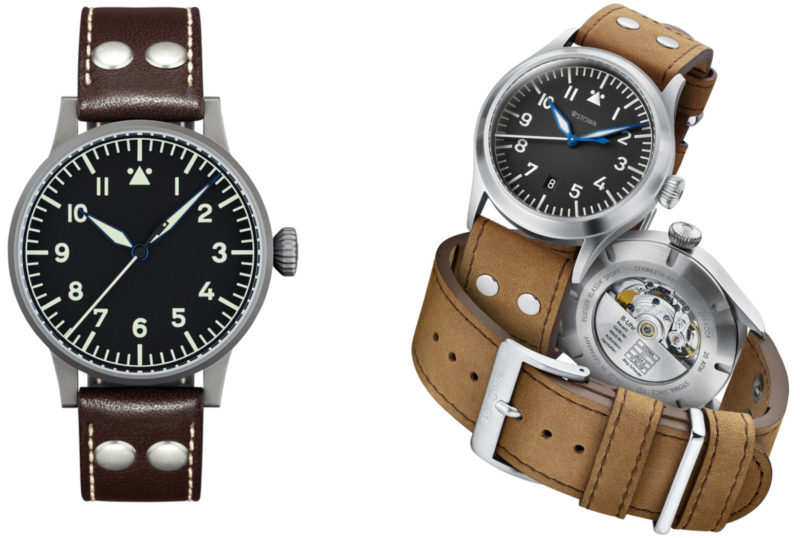
Laco Munster | Stowa Flieger 43 | |
|---|---|---|
42mm | Case Diameter | 43mm |
Flat Sapphire | Crystal | Flat Sapphire |
50m / 5 bar | Water Resistance | 200m / 20 bar |
ETA 2824-2 (Elaborated) | Movement | ETA 2824-2 (Top) |
Superluminova C3 | Lume | Superluminova C3 |
Stainless Steel | Case Back | Sapphire Glass |
Temperature-Blued | Hands | Temperature-Blued |
I've listed most of the important components of each watch above. For comparison, it's good to note that the Laco Munster retails at $1,190 and the Stowa Flieger Sports retails at €1,135 ($1,275).
Crystal
First, both watchmakers use sapphire crystals with inside anti-reflective coating, which is expected at this price point.
Stowa boasts an "extra thick" sapphire glass, which should be a bit more shatter-resistant than average.
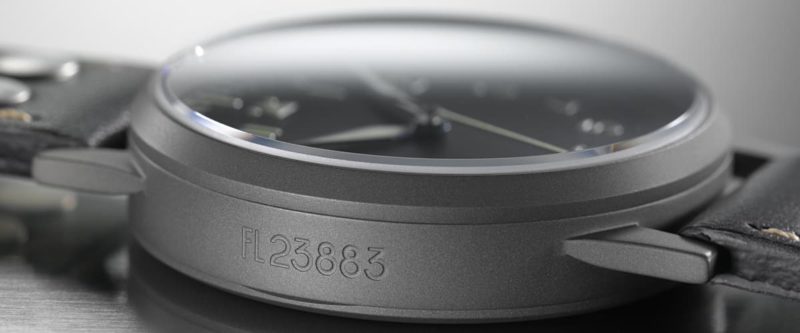
Conversely, Laco's crystal isn't thicker than your average sapphire glass. However, they offer the possibility to add a layer of AR-coating to the outer side of the crystal for an extra $120.
This proposition boggles my mind considering most people hate outer AR-Coating (easy to scratch, defeats the purpose of getting sapphire). Also, AR-coating isn't that important for flat sapphire, so this $120 option is preposterous.
Water resistance
While the cheaper (€925) Stowa Flieger 40 only offers 50m of water resistance, the 43mm Sports version is bumped up to 200m of WR. This figure means that you could technically take your Flieger for a dive, but it's not recommended since it uses a push-pull crown.
The Laco Munster also uses a push-pull crown and only offers 50m of water resistance. Technically, this is enough to go for a swim with your watch, but most people tend to be cautious and avoid water around their Laco Munster.
Another key difference between the two is that Laco uses a flat-top diamond crown which is reminiscent of the original B-Uhr watch, but is a bit sharper and might dig into the wrist. Conversely, Stowa uses a rounded onion crown that's usually more comfortable.
Movement
For this price range, the two watchmakers use an ETA 2824-2 caliber. However, Laco's movement is rated at "Elaboré" (0 to +14 sec/day) whereas the Stowa has a "Top" rating (0 to +8 sec/day).
The rest of the movement's specs are the same for the two watches, so Stowa is the clear winner here. Nonetheless, the Top ETA 2824-2 is also available for the Laco Munster, but you'll have to fork out an extra $150.
With this $150 markup, the Laco gets more expensive than the Stowa, meaning that the latter is the best bang-for-the-buck.
Other
The rest of the specs are on par with each other. The two brands make temperature-blued hands, use Superluminova C3 lume (brightest available), use a perforated leather strap, etc..
Another small difference is the case back, which is plain stainless steel for Laco and sapphire crystal for the Stowa. This is really a matter of preference and I can't say that one's better than the other.
Customization
Laco and Stowa both offer a certain level of customization with their respective watch, but it's not the same kind.
For example, Laco's customization focuses on actual components like an upgraded movement, an additional layer of anti-reflective coating, the crown's position, etc..
On the other hand, Stowa's customization focuses more on aesthetics. For instance, you can decide between logo/no logo, date or no date, etc.. They also offer to add the hand-winding function for an extra €17.
Conclusion
In summary, Laco offers watches that are truer to the original B-Uhr watch (rougher finish, straight lugs, etc.), whereas Stowa watches are modern interpretations that are more comfortable and better finished.
Also, Stowa seems to offer better specs for the same amount of money, and their brand is more respected (no Miyota movements, no bankruptcy, no cheaper models, etc.).
Let me know in the comments below which is your favorite brand between the two!

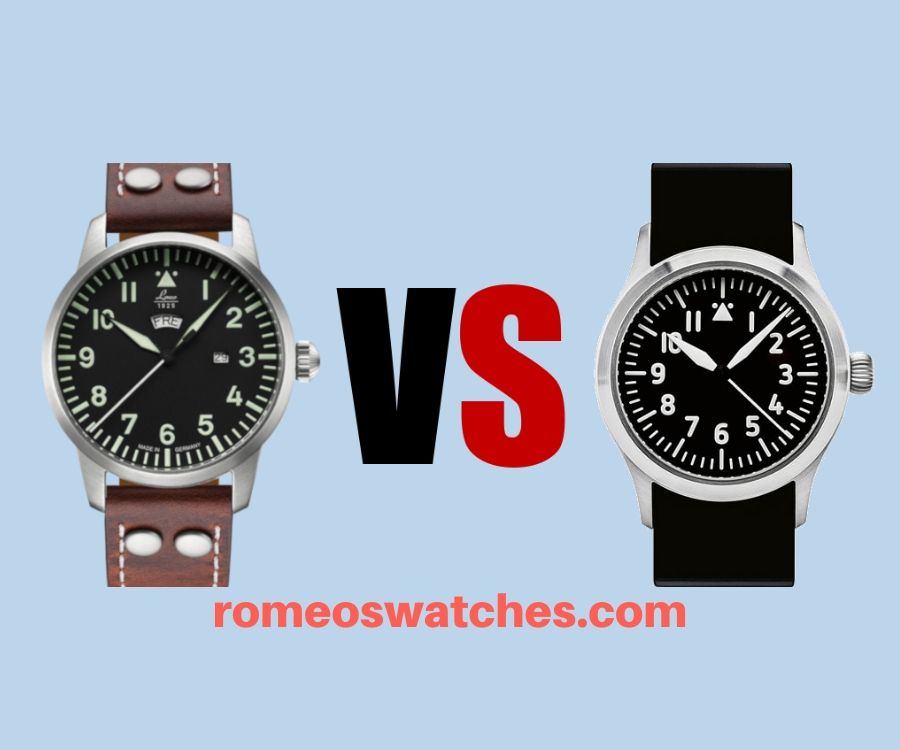

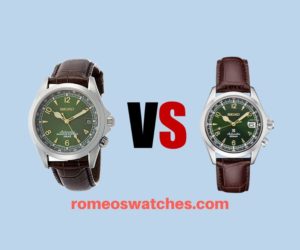
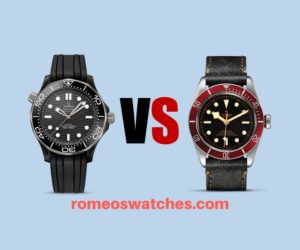
I have been undecided between a Stowa 6498 and a Laco ULM – both use the Unitas 6498 movement, which is amazing. The Stowa was way more expensive than the Laco for essentially the same watch. And both great watches so I’ve bought the ULM.
I do understand what you mean about the break in the Laco timeline but you have to admire a company which can restart business with only 8 employees!
Indeed Garry, I have nothing but admiration for any watchmaker that can make a profit while providing great watches for a good price!
If we pay attention to the break in the timeline, half of the swiss watch industry should be put out of business. The author places too much importance on the bankruptcy fact when companies like A Lange and Sohne, Blancpain, Zenith, etc. literally were resurrected from ashes. Czapek and Arnold and Sons are just good stories turned into watch companies… And with Laco, did bankruptcy actually force Laco out of business or was it a mere restructuring and sale? Because for lawyers and for lay people the word bankruptcy means two different things. Just saying…
I went for historical accuracy so Laco was a no brainer.
Honestly, I had to stop reading. The Luftwaffe was the tip of the blitzkrieg spear. They rained death on the undeserving and innocent… And the classic fleiger was designed in 42, (iirc) specifically to support their operations. The bombardment on Pforzheim wasn’t so much ‘the tragedy’ as it was part of an effort to end ‘the tragedy’. It’s important to remember these watch companies were both of a murderous insanity that threatened the globe.
Both companies should be embarrassed by their involvement in the war effort. Hamilton, Waltham, Elgin and etc, are the watch companies that should be celebrated and could be proud of their contributions to WWII.
I’m not saying these watches shouldn’t be made and sold, but they should never receive a pass on what they were. The reminder should be stark in an article like this.
Hmm, I take your point, but you have carried it too far, but is symptomatic of the current trend for mining history to find something to be offended about. I’m not sure how these watch companies ”were both of a murderous insanity”…in what way? They made watches…and? Should Siemens, Volkswagen, Mercedes, BMW etc etc etc, which could be argued did far more to advance and continue the German war effort, also be exposed (yet again) for their involvement? Where does it end? How much do current companies owners and employees need to be held responsible for what their company did or did not do 80 years ago? What does embarrassed look like in your book and what should they do to atone, to the point they can finally ”receive a pass”?
I agree that was a time of unimaginable cruelty and tragedy but the German people were as much of a victim of Hitler and his followers as the rest of the world. Most businesses that made equipment for the war effort didn’t have a choice in the matter anyway, whether these watch makers had that choice I have no idea but the appreciation is not of a Nazi symbol but of a piece of engineering history. Every country has committed its atrocities but that does not define its people now.
I will have to remind you of another tragedy held by the american airforce, the release of atomic bombs over Hiroshima and Nagasaki, in a timing when the war was already decided. According your logic we shouldn’t celebrate Hami or other watch brands that provided watches to the american forces either.
Tell it to IWC. They supplied watches to both sides but are now a super-respected brand
The German pilots were never fond of Hitler and simply did their job. Plus the Deutscher top brass tried at least 25 times to assassinate Hitler. The German military leaders were saddled by a nut job of Hitler and simply fought for their Fatherland.
If I buy a first German made watch, and my choices were a Stowa or preferably a Laco, it would be in honor of their German air aces. I reckon all time air ace Erich Hartmann might have worn a LACO. I probably will do the heretical and buy a Miyota powered base Laco but will get the Laco B Uhr as the ETA 2824 powered one.
If you are determined to know which watch has a swiss heart beat versus japanese heart beat and opt for swiss only engine, here is a matrix. https://www.laco.de/en/faq
Don’t get me wrong, Stowa is a fine and pretty watch, but you will have to stomache the higher cost.
I opt for the experience of owning a german watch but at a very reasonable cost: miyota powered Laco
The price difference that is mentioned is practically non-existent.
Then, mechanismes are the same, most of the watch’s specs are comparable…but Laco makes hands that have a blue frame which isn’t due to paint. it is a different metallic blue that comes from heat. After heating it for a specific amount of time it becomes blue, and the hands are then ready. The render is better ! Thus saying that Stowa has better finish seems like fake news to me. I mostly chose Laco because of historical accuracy but if Stowa had better finishing then I would have picked Stowa. I looked at both watches and the blue hands had me convinced.
The fat, shiny bezel on the Stowa looks wrong. Not a true Flieger. There’s really nothing unique about the Stowa – it’s a generic design with a Flieger dial. The price difference is minimal even with Laco’s +$150 for the Topgrade movement, so for me the Laco is an easy choice.
I disagree with the author. He seems to be biased toward Stowa. As I mentioned above in one of my replies to somebody’s comments, bankruptcy (and it remains a question whether it resulted in the actual death of the company) in and by itself isn’t a nail in the coffin in the industry which celebrates the likes of A Lange and Sohne, Blancpain and Zenith to name a few. Re movement quality Romeo is wrong because as I remembered from when I was comparing the two for purchase (and now I double checked again) both companies offer lower grade elabore and top grade ETA/Selittas. It’s just that Laco also offers a Japanese variant as a cheaper option. Lugs – I will only say this: Have you seen lugs on Breguet watches? These straight lugs are historically accurate type and if you are going for a historically inspired watch then you should have a historically inspired shape. BTW, I use them without any issue on Laco Venedig 42. Thought the watch would be big for my small wrist but they are no issue whatsoever. Also, upgrading from elabore to top grade didn’t cost me 150 dollars at Laco. I am pretty sure it was circa 90 euros. So for these reasons, I believe that Mr. Romeo here is either heavily biased against Laco or simply sponsored by Stowa…
I have a small watch collection (<30) and I had a space for another historical pilot watch. For me, historical accuracy was important but I couldn't wear a 55mm original so I went for a reproduction flieger. I looked at both Stowa and Laco but settled on a Laco Leipzig 42mm with a Selitta SW210 handwound movement and a closed loop pilot strap because it was as close to an original as I could get. I ordered direct from Laco.
Am I bothered by the break in history of Laco? Not at all.
Am I bothered about the history of the flieger and who wore it? A little, but I also own a WW2 Omega pilot watch and it could have been worn by the R.A.F. pilots who bombed Dresden.
The Laco has proven to be a smart, reliable conversation piece and I'm not sure the Stowa would attract the same attention as its appearance, in my opinion, is a little too "ordinary" and modern.